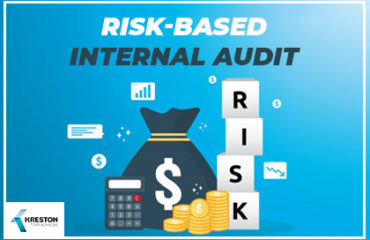
As digital transformation sweeps into every industry, we find newer and more efficient solutions to every function in business. Companies are making the most of emerging technologies, data analytics, and the cloud to build new business models. A key element that defines the success of a business in the digital age is trust. Amidst transformations and adoption of new technologies, sustaining the trust of all stakeholders such as customers, employees, investors, etc. can be a challenge.
Internal audit has always played an important role in building trust for a business. But if the internal auditing system is not ‘digitally fit’ to work with a transformed business, the scope for error and the overall risk increases. An internal audit system needs to keep up with the pace of innovation in the technology of business to help create trust.
Here’s why internal auditing needs to be digitally empowered –
Risk – Using data analytics and machine learning enables better risk assessment that can help create a high-security standard for business transactions.
Cost – Improved efficiency in the internal auditing process can help reduce costs by increasing business agility. The use of technology in internal auditing can minimize disruption to business during the audit review and help the business cope with rapid changes in the industry environment.
Value – Use of digital technology and automation can help save time for internal auditors. This allows leveraging data analytics to draw valuable business insights from auditing data.
At Kreston, we focus on four aspects of automation in internal auditing. These six points drive an effective internal audit and improve risk management of the business as a whole –
- Support the digital transformation of the organization – The internal auditing team must go all-in to support the company’s plan for digital transformation. This is the first step in evolving with technological innovation in business.
- Real-time risk assessment – Develop new systems that deliver the required inputs to business to help management act on risks in real-time. This will help the internal auditing system respond at the speed
- Training existing staff and hiring new people – Digital transformation does not mean replacing the whole internal auditing team with people adept at using technology. It is imperative to protect the talent you have by improving skills and hiring new people to work in tandem with each other.
- Identifying the right fit technologies for internal audit – Choose the right technology to streamline your internal auditing functions. Innovative technologies such as data analytics, artificial intelligence, and audit planning can help reimagine the whole audit process.
With the rapid technological change in organizations, the use of big data, and the growing threat of cyber-crimes has raised the IT aspect of business risk. Companies can move forward into the digital era only with confidence in their security systems – this in turn can be made possible by integrating resilience and agility into business processes.
The use of technology in the internal audits can be the first step in building trust and security for a business. This can be instrumental in earning stakeholder’s trust, making the right management decisions for the long run, and achieving profitable growth in the digital age


